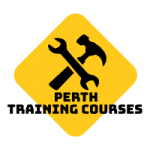In need of a skid steer or bobcat ticket in Perth?
The skid steering loader is a small-engine machine that can be used to perform various tasks on the job site. Skid steering can be used for anything from digging holes to landscaping gardens to moving soil to a building site, they can do it all.
Deciding whether tracks or wheels are needed on a skid steering wheel can be challenging when determining the specific skid steering required for your work site. However, we compared the differences between having tracks or wheels here to help you make your decisions.
Why are the Skid Steers with wheels working best on even ground?
When working on terrain such as concrete or hard surfaces, skid steering wheels are the best choice. This is because the wheels are not designed to be challenged, but rather roll along without interference. When driving past construction sites that are being extended or renovated, you will see wheeled skid steering wheels in use as they are able to gain extra traction from the developed terrain.
When using a skid steering wheel with tracks on a developed surface, it is less efficient than using a skid steering wheel as it was designed to tackle tough terrain. Wheels on the developed surface wear far less than tracks. Skid steering with tracks will require regular replacement tracks, sprockets and other components when driven on pavements or concrete compared to soil or dirt.
What makes the Skid Steer track suitable for difficult terrain?
Skid steering tracks are perfect for tackling tough terrain such as sand, mud and snow as they rarely get bogged down. The wet weather, the enemy of the wheels, doesn’t match the tracks because the slippery ground is the best friend of the tracks. This improves productivity at the workplace, as there is no need to wait for the soil to dry up.
The reason skid steering can tackle terrain where the wheels can’t be, is because of their weight distribution. Tracks are able to disperse their weight over a much larger and wider surface area, which ultimately improves the stability of the skid steering. With this improved stability, the breeze is the ability to manoeuvre the skid steering in tight locations or in less than perfect conditions. However, this does not limit skid steering with tracks to hard terrain, but can also work on concrete and other developed surfaces.
Skid steering wheel.
Do you have Skid Steer wheels or tracks that leave a mess?
The skid steering wheels are seen to leave the least amount of clean-up compared to the wheeled skid steering wheels. This is due to the centre of gravity and stability of the tracks as they glide over any surface. In comparison, the wheels can create trenches that can be scattered across the work site. These trenches created by the wheeled skid steering can be repaired, but this can cause problems as resources have to be delegated to address this issue. As a result, by fixing these trenches, extra time and money must be spent at the workplace, which reduces work efficiency.
Do the Skid Steer wheels or tracks require minimal maintenance?
The simple answer to this question is that tracked skid steering requires more attention than wheeled skid steering. This is the result of constantly examining the underside of the carriage, but also of checking the tension of the tracks.
Skid steering wheels also require the attention of undercarriage control, but the process is much faster and easier than tracked skid steering. The reason for this is simply that wheeled skid steering is usually operated on developed surfaces, which means that dirt and other elements do not affect them as much as tracked skid steering. The skid steering wheels are also much more accessible for cleaning than the tracked skid steering wheels, as the wheels do not cover the undercarriage.
Reach out to our friendly team and inquire about sitting your bobcat or skid steer ticket today!
Previous Post:
Things You Can Do With a Skid Steer Loader

